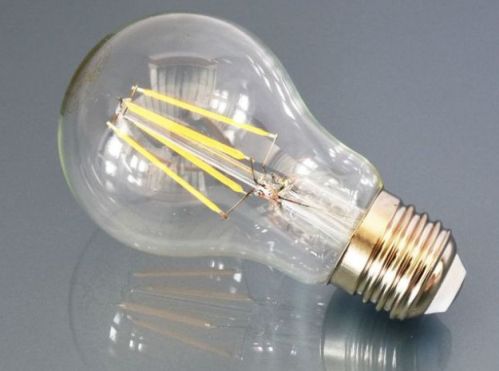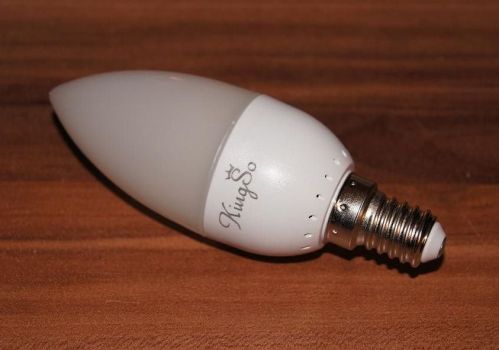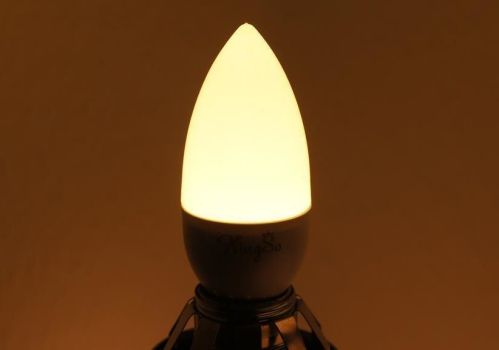Categories: Sources of light, Energy saving
Number of views: 13605
Comments on the article: 2
What determines the durability of LED lamps
Agree, it’s nice to realize that the life of the purchased by you led lamp will be 5, and maybe more years. At least that's what it says on the packaging. In fact, many sellers of LED lamps and ribbons overestimate this figure simply to attract a buyer. After all, each of us somehow wants to take care of energy saving at home or at work, and for some it is always advisable to do this with minimal expense.
This is where a frugal consumer lies in wait for a tricky trap: the average LED lamp has about 7 times more light output compared to an incandescent lamp. And this benefit overlaps with any other, seemingly desirable, arguments. But in vain.
In fact, there are some factors that it is advisable to pay attention to when choosing an LED lamp, and not just grab the cheapest. Sellers want to sell, and buyers want to avoid bitter disappointments. Although sometimes seditious thought begs it, they say the proverb that the avaricious pays twice - certainly not about you. Let us, however, examine the details of the problem more closely.

LED lamp life
The average life of a LED lamp, as claimed by different manufacturers, is about 50,000 hours in continuous mode. This is about 6 years, if you use the lamp around the clock without turning off, and if 8 hours a day, then all 15 years. Not bad. But who checked this information in practice? Did any manufacturer have such studies?
It is unlikely that we will be able to confirm the warranty hours declared by the manufacturer. Of course, in comparison with an incandescent light bulb with its 1,000 hours, or with a fluorescent lamp with its 10,000 hours and the sad experience of failures that managed to fill a sore point, 15 years for an LED light looks very tempting. But promises and reality, as always, diverge.

In reality, it is necessary to take into account possible voltage drops, the variability of weather conditions (when it comes to the street), the frequency of accidents related to power supply, etc.
Many factors adversely affect the LED lamp and its real life. Imagine a LED lamp requires a standard mains voltage of 220-240 volts, however, surges in the network will from time to time contribute to overloading the control electronics of the lamp.
By the way, the lowest of the permissible supply voltages of the lamp should be indicated on its packaging. Plus, the LEDs fade over time, the lamp gradually loses its luminous flux. As a result, it is necessary to fairly distinguish between the concepts of “full life” and “effective life” of an LED lamp.
The effective period of operation is the period of time during which the lamp will lose 30% of the luminous flux from the original, and the full period through which it will finally fail.
Manufacturers, who value their reputation, indicate on the packaging both the full lamp life and the effective one. Most manufacturers indicate only the full service life. But who has tested this full service life for thousands of hours before being sent for sale? In addition, the full service life is an approximation.
Conclusion: you do not need to buy an LED lamp based on the fact that the manufacturer wrote on the packaging the largest of the proposed service life, because this does not guarantee full brightness for 15 years. Most likely, after 5 years, the lamp will fade noticeably.
The average real effective life for white light LEDs is about 10,000 hours, that is, continuously for 1 year. For color - about twice as much.After this time, the degradation of the LED crystal will begin to be noticeable.

What is the manufacturer sure of?
The most important figure that can reflect the real confidence of the manufacturer in the quality of its LED lamps is the warranty period. Judge for yourself if the manufacturer fears that his lamps are of poor quality, he gives only 1 year warranty, and this is in conditions of mass belief in the "eternity" of LED lamps among consumers.
Do you have any doubts? And if the manufacturer himself gives a guarantee of 5 years and is ready to exchange in the event of a lamp failure? This just indicates a high quality product. The manufacturer is in no hurry to protect himself with a 1 year warranty from unsuspecting buyers who want to save money.
High-quality LED lamps are more expensive and have a guarantee, low-quality ones are attractive at a low price, while the warranty is often not available at all. As before, lots of low-quality LED lamps for freebie lovers come from friendly China. Think about how safe the light of such a lamp is for your health and mental state.
Are you sure that a sudden short circuit will not ruin your beautiful day or evening? How much do you trust the life information indicated on the lamp, the name of the manufacturer of which you first see? Saving on the assembly of cheap lamps often comes sideways to the buyer, who succumbed to the temptation of low price.

How can the consumer extend the life of the LED lamp?
If you chose a lamp from a reliable manufacturer, which was not limited to a 1 year warranty, then you took the first step to increasing the durability of your LED lighting. Next, you just need to operate the equipment correctly. Ensure proper heat dissipation from the lamps.
In general, the design of a high-quality LED lamp implies that, if necessary, it has an installed radiator. After that, you just have to regularly dust off the lamp housing or just walk near it with a vacuum cleaner. During such cleaning, the lamp must be turned off!
If it comes to led strip, then try to stick it on a surface with good thermal conductivity in order to delay the moment of noticeable thermal degradation of crystals.
One way or another, the durability of LED lamps depends primarily on the quality of the product, which must be confirmed by the manufacturer, giving a guarantee of several years. Secondly, the owner must always monitor the cleanliness of the heat-absorbing fixtures of the lamps. Thirdly, the electricity supplier needs to prevent power surges in the household network so that consumers' bulbs are less likely to fail due to his fault.
See also at bgv.electricianexp.com
:
